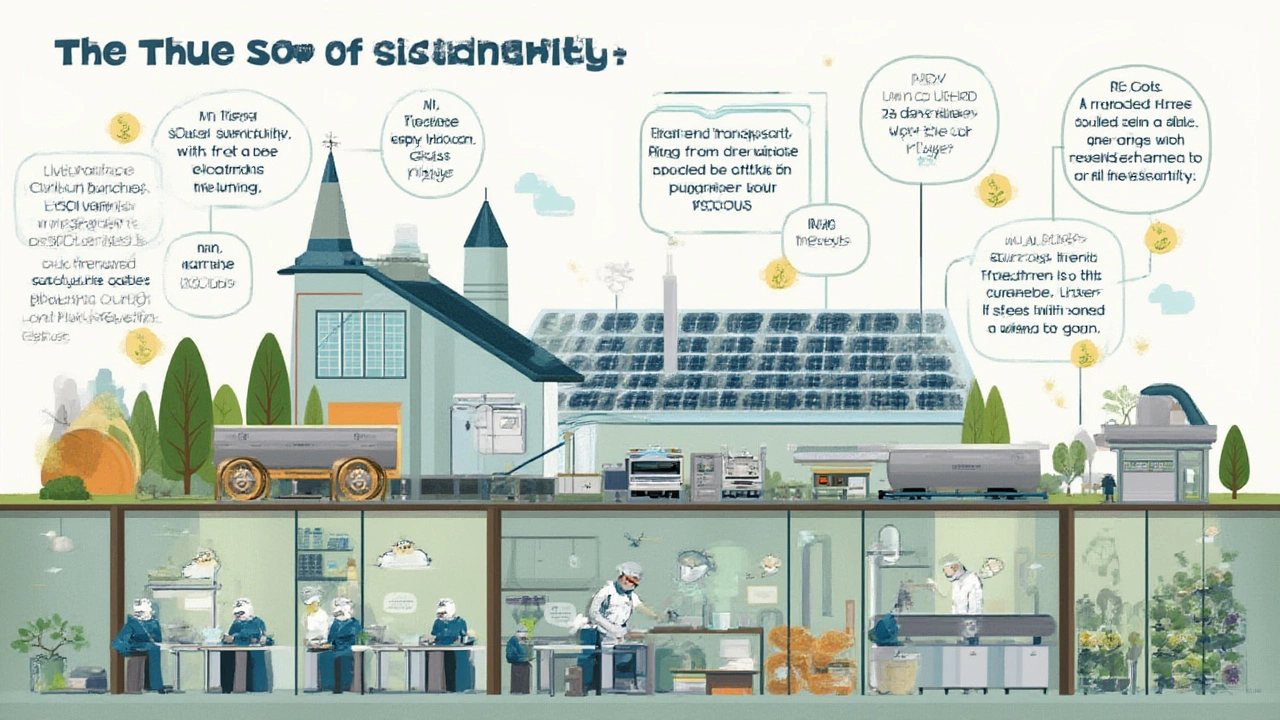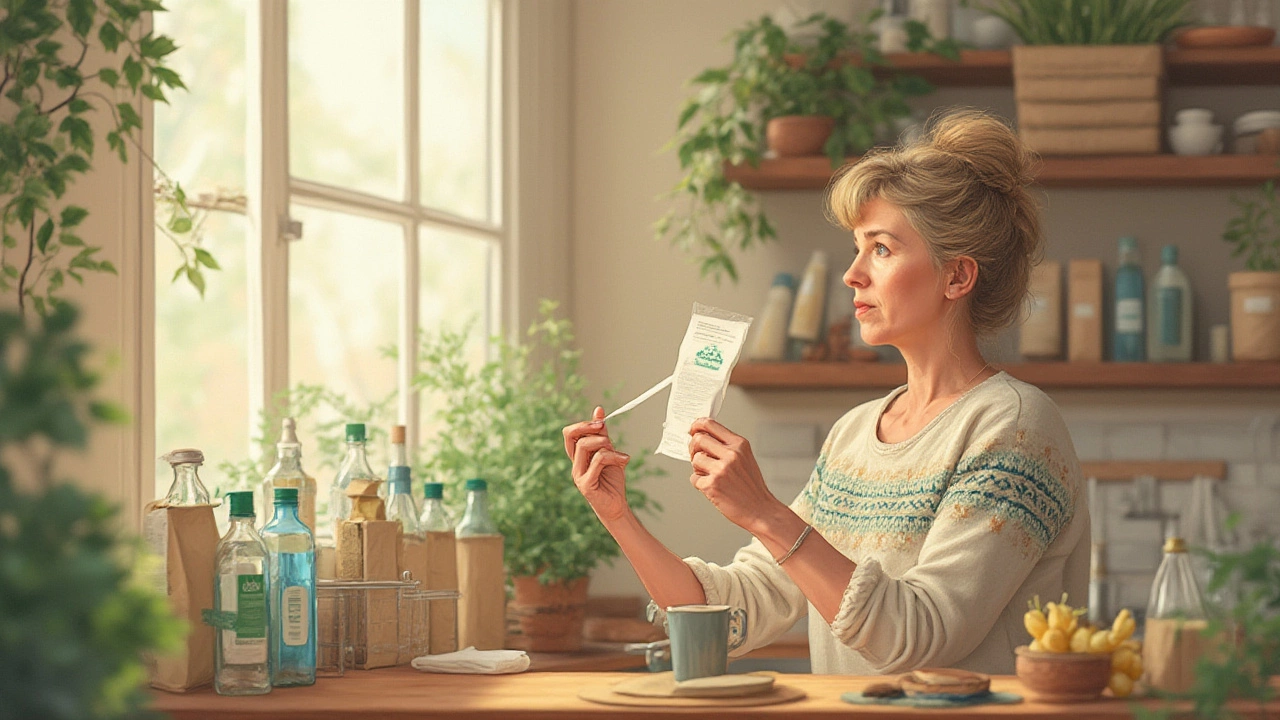If you’ve eyed that bottle of eco-friendly all-purpose cleaner and flinched at the price, you’re definitely not alone. Those “natural” and “green” labels seem to add more than just freshness—they add dollars and cents. But is it just hype, or is there a real reason behind the sticker shock? Spoiler: There’s a whole lot going on behind the scenes, and knowing the why gives you a leg up on making smart decisions for your home and the planet without draining your savings account.
The Building Blocks: Why Green Ingredients Cost More
The first thing to know about eco-friendly cleaning products is that they’re made with materials that simply cost more from the get-go. Let’s dig into why. Most commercial cleaners stick to the cheap stuff—think mass-produced, synthetic chemicals made in giant batches from petroleum. They work, they’re easy to produce, and most of all, they’re dirt cheap. Now, swap that out for plant-based oils like coconut, corn, or even citrus, which need to be harvested, often organically, and processed without harsh chemicals. The result? Every step adds to the bill.
Here’s the kicker: natural and organic certification is a big deal when it comes to green cleaning. Farmers have to jump through hoops to keep their crops pesticide-free, rotate fields, and stick to strict regulations. That means fewer chemicals in your home, but more headaches and cost for suppliers. And when brands really go the extra mile—using fair trade sources or paying for biodegradable packaging—they’re stacking even more good intentions (and costs) into your bottle of soap or surface spray.
While it’s easy to think of a cleaner as just a simple mix of a few liquids, check those labels for ingredients like sodium bicarbonate, citric acid, balsam fir oil, or lauryl glucoside. Each one has a higher cost per kilogram than classic cleaning chemicals. Plus, lots of these are produced in smaller batches since demand is lower than for traditional synthetic stuff, making bulk savings basically nonexistent. It’s a wild domino effect in the green supply chain.
| Ingredient | Eco-Friendly | Traditional |
|---|---|---|
| Citric Acid (organic) | £6.20 | £2.10 |
| Coconut-Based Surfactant | £8.50 | Petroleum Surfactant £1.90 |
| Natural Fragrance Oil | £15.00 | Artificial Scent £2.80 |
Testing is another money sink. Green chemistry doesn’t get a free pass—brands must prove their products clean just as well as traditional stuff, but without the harmful side effects. Then there’s the regulatory side: safety and eco-toxicity studies, certifications for compostable packaging, cruelty-free labeling, and transparent ingredient sourcing. All of this gets layered onto the final retail price so you can trust what you’re spraying on your kitchen counter.
It’s wild, but most eco-brands invest money back into the earth too—things like carbon offsetting, renewable energy in production, or even funding reforestation with each purchase. That commitment comes straight from the revenue, so it’s another chunk you’re paying for with every bottle you buy. If you’re wondering why your usual budget cleaner from the grocery store is £2, but the green option is closer to £6 or even £10 in boutique shops, there’s the answer: expensive, carefully sourced ingredients, costly compliance, and an extra helping of eco responsibility all put their weight on the price tag.
But here’s a quick tip: Not all eco cleaners are boutique expensive. Sometimes, store-brand options use fewer frills—simpler formulas, basic packaging, less marketing flash—and can be quite affordable. Just make sure they’re certified by a known third-party group like the EU Ecolabel, so you know you’re still making a good choice.

The Small Batch Dilemma: Production, Packaging, and the Price of Doing Good
Let’s talk scale. Classic cleaning products are churned out by the tanker-load; think of it like brewing tea by the ocean instead of a single mug. This huge scale brings costs down. But eco-friendly makers don’t have that luxury—yet. They operate in smaller batches, mainly because demand is still catching up with the rest of the market. This means higher costs for everything, from raw materials to bottling and transport. Fewer units mean the fixed costs (machines, worker salaries, certifications) get spread over a handful of bottles, not millions.
Packaging is another biggie. Those biodegradable bottles and recycled-cardboard boxes—yeah, they look cooler, but they’re not cheap to design or produce. Less volume means fewer discounts for buying in bulk. For example, a standard plastic spray bottle might cost a big brand only five pence, but an eco-friendly brand splurging on compostable bioplastic might pay three to five times as much. And if you’re like me and end up weirdly obsessed with how packaging looks under the sink, you’ll notice greener options also lean into more durable, refillable containers, which are pricier upfront.
Distribution is wild too. Eco-friendly cleaning brands don’t always get premium shelf space at the big supermarkets. Many sell directly to consumers or use smaller, specialty retailers, which totals up to higher logistical costs. Some even focus on online subscriptions or zero-waste stores, which, while super hip and convenient, cut into profit margins or bump up costs to compensate for eco-conscious shipping.
If you’ve ever noticed fresh, brightly colored refills in glass jars or pouch packs at your local market, you’re already seeing the price of innovation. These packs are supposed to be better for the planet but come with the price tag that innovation always carries. It’s kind of like buying the latest smartphone—do you want today’s tech, or yesterday’s sticker price?
Let’s get real about waste, too. Traditional mass market cleaners often get away with a ton of greenwashing—those vague “natural” claims that don’t actually mean much. True green brands sink extra money into rigorous transparency and independent testing, sometimes going so far as publishing entire breakdowns of their sourcing and sustainability impact. That’s marketing you can trust, but it’s also marketing that eats away at the profit pie, pushing prices a little higher so the brand can stick to its eco-promise.
But want to know a little hack? Consider subscription deals or membership clubs from reputable green brands. These programs often slash the cost of each refill compared to one-off purchases. Also, many zero-waste shops will give you discounts for bringing your own containers. It’s a win-win; cleaner earth, fuller wallet.
Fun fact: According to a packed report in March 2025, the top three cost drivers for eco-friendly cleaning brands in the UK were (1) natural ingredient sourcing, (2) low production volume, and (3) sustainable packaging. Together, they made up roughly 60% of the average retail price. Brands that found ways to share supply chains with larger companies or offered loyalty refills usually undercut their rivals by 15% or more without sacrificing sustainability.

How to Clean Better, Spend Less—and Still Stay Green
The best part about eco-friendly cleaning is that you don’t have to spend a fortune to ditch toxic chemicals. Turns out, a bunch of the most effective green cleaning ingredients are already in your kitchen, and you can hack together your own homebrew for next to nothing.
Here’s one I swear by: white vinegar. It cuts through grease, limescale, and even some germs. Mix it with water in a spray bottle, add a few drops of essential oil (like lemon or lavender if you’re feeling fancy), and you get a surprisingly powerful surface cleaner. Baking soda scrubs? Absolute legends for sinks, tubs, and stovetops. They cost pennies and break down into harmless byproducts.
Let’s break out a classic all-purpose paste—grab a cup of baking soda, a splash of vinegar, and a squirt of liquid soap (preferably plant-based if you can swing it). Stir into a paste, paste it over grimy tiles or your oven door, let it sit, then wipe. It genuinely works, won’t break the bank, and you skip the packaging drama entirely.
Bulk-buying is another secret. Pick up concentrated eco-friendly cleaning liquids or refill packs instead of single-use bottles. You’ll usually pay a premium upfront, but the per-use cost plummets—plus, refilling at home means fewer trips to the shop, less plastic in your bin, and a lighter impact on your conscience.
And don’t sleep on local brands and co-ops. Last winter, Isla discovered a little family-run shop that’s been pumping out honest, transparent green cleaners from their village workshop. Cheaper than the big brands, super concentrated, and they’ll refill your old bottles instead of stuffing the landfills with new ones. Sometimes, going local gets you premium quality and price.
Here’s a little cheat sheet for those feeling overwhelmed:
- Vinegar for glass and shiny surfaces (mix with water, always skip marble or granite though—it can etch them!)
- Baking soda or sodium bicarbonate for burnt pans, ovens, and soap scum. Sprinkle, scrub, and rinse!
- Lemon juice for limescale on kettles or bathroom taps. Rest for 15 minutes, then rinse off.
- Cornstarch or arrowroot powder to polish windows or absorb greasy spills on carpets before vacuuming.
- Essential oils to boost the smell and even add a little extra grime-fighting power—just add sparingly, and don’t use around sensitive pets.
The truth? Yes, most eco-friendly cleaning products really are more expensive upfront. You’re paying for better ingredients, fairer labor practices, safer processes, and less waste. But you don’t have to cough up cash every time you want to keep your home clean and green. By doubling down on DIY, buying smarter, shopping small, and choosing refills, you can side-step the worst of the costs without sacrificing your commitment to sustainability.
Sustainable choices are supposed to make life better, not harder. By understanding what goes into your cleaning bottle, you’re not just protecting your home from harsh chemicals—you’re giving your wallet, your health, and even the planet a breather. Turns out, that sparkling counter can come with a conscience—and sometimes, even with a bargain.
